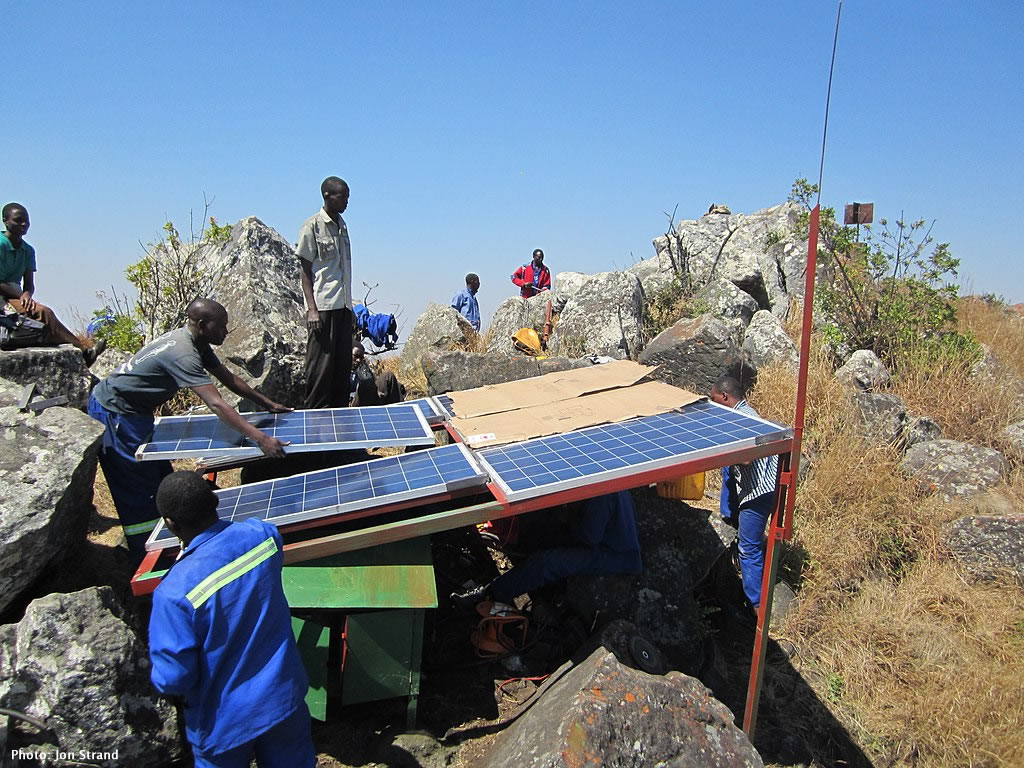Today, the market for commercial and industrial (C&I) solar in Sub-Saharan Africa appears positioned for rapid growth. The high-cost and poor-quality of grid power, declining solar energy costs, and the rise of energy storage are the primary factors contributing to this tipping point effect, according to a 2019 report from Bloomberg New Energy Finance (NEF).
The study, in fact, found that on-site solar power is now cheaper than the electricity tariffs paid by C&I companies in seven of the 15 Sub-Saharan Africa markets it reviewed.
We spoke recently with Arnaud Henin, Managing Director of Gommyr Power Networks, about high-penetration renewable-powered microgrids for commercial and industrial uses and his team’s efforts to develop resilient distributed generation, energy storage, and microgrid projects in Africa.

Photo: JonStrand [CC BY-SA 4.0 (https://creativecommons.org/licenses/by-sa/4.0)]
Henin explains that many commercial and industrial energy users in Africa are especially challenged by supply-related issues, reliability concerns, and high energy costs, and that within the past year, he has seen first-hand how decreasing costs of solar and battery systems have helped solar-battery microgrids become economically viable alternatives to diesel and grid services for C&I applications. His perspectives are especially relevant as the microgrid market in Africa expands. We’re pleased to share his insights here.
Microgrid News (MN): Do you attribute the increase in renewable-powered microgrids in Africa today to the intersection of decreasing equipment costs and increasing demand for reliable energy delivery systems?
Arnaud Henin (AH): Having cost-competitive power (relative to either grid or diesel alternatives) is the fundamental driver of higher adoption of renewable energy and microgrid systems in Africa. Most of Africa has very good renewable resources and in many areas demand is growing which is not being met by grid power or has led to poor reliability from grids. Combined with decreasing PV and battery costs, this has led to microgrids being economic for delivering “high penetrations” of renewable power (which we would define as more than 70% of power delivered to the load coming from renewable sources).
There are other factors supporting the trend, including some experience with prior PV systems, increasing or uncertain utility rates, and branding benefits from using renewable power.

MN: In your experience how have microgrids improved power quality and resilience?
AH: As battery costs have come down and battery performance has improved over the past few years, energy storage has become a more significant part of microgrid systems for commercial and industrial users in Africa.
A few years ago batteries (typically lead-acid until recently) were often used to protect and serve critical loads. Now larger battery systems are being used to serve entire facilities and store solar output for use over evenings and nighttime. These larger batteries also stabilize the power quality and ensure reliability to the system which is valued, as many grid-connected users suffer from voltage variations and frequent grid outages.
MN: Tell us a little about the three microgrid projects in Tanzania, Mozambique, and Zambia that your team is working on. What power-related issues do these microgrids address?
AH: We are working on a number of commercial and industrial systems in a few African markets including Kenya, Tanzania, Mozambique, and Zambia.
We have worked on an off-grid, high-penetration system for a safari lodge in Tanzania that has been successfully delivering over 80% of [the facility’s] power for almost a year. This system is delivering cost savings relative to the previous diesel system as well as displacing fossil fuel usage with renewable solar power.
We have been working for over a year on an island resort system in Mozambique which is under construction. The system is a solar-battery-diesel system meant to deliver over 85% renewable power. The system will also produce savings relative to the current diesel system, enable better management of the generators at low loading, and reduce the fuel delivery logistics required to bring fuel to site.
We are in contracting discussions with two other grid-connected safari lodges in Kenya and Zambia where the objective is to reduce grid consumption and manage the frequent grid outages. The low cost of power in Zambia and relatively weak local currencies make the economic case more challenging to achieve with available system budgets.
MN: What lessons have your team gleaned from these projects that it will apply to other microgrid projects?
AH: There are both technical and economic factors that are important to implementing a cost-effective, high-penetration renewable microgrid system.
On the technical side, high-penetration systems require suitable system control and integration; they also require analysis into the appropriate system architecture and component and communication response times in order to maintain system stability and power quality. For grid-connected systems, grid disconnection, reconnection, and limiting grid export may need to be managed, and in many cases existing solar PV and battery systems need to be integrated into the new microgrid.
On the economic side, costs need to be managed to keep the LCOE lower than the current costs to the end-user, the high CAPEX costs of the system typically need to be financed through third-party financiers, and the system performance needs to be supported and guaranteed by the company doing Engineering/Procurement/Construction (EPC).
Arnaud Henin delivered a presentation on this topic at the 7th annual HOMER International Microgrid Conference taking place in Cambridge, MA, October 7-9, 2019.

